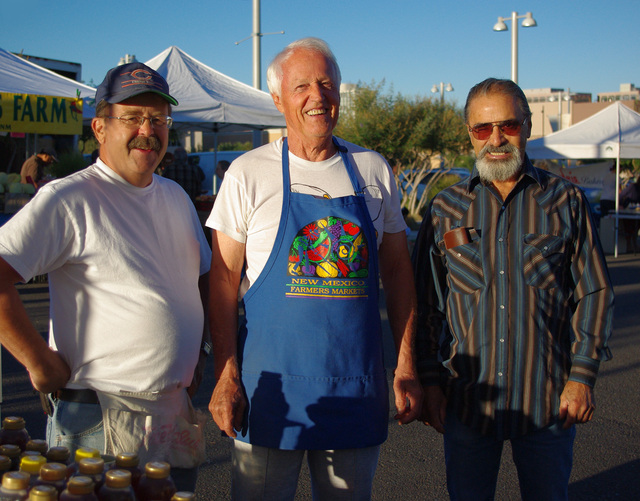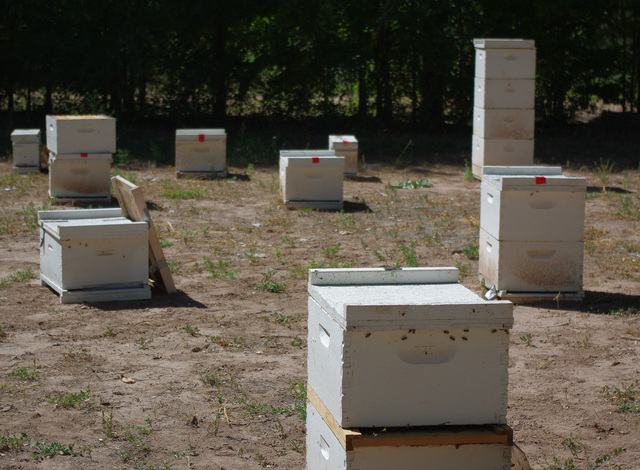Ken Hays is wild about bees. He began beekeeping as a hobby in 1968. He would continue working as an air traffic controller until 1988, when the bees claimed him full time. With fellow beekeepers Joe Wesbrook and Andy Duran, Hays covers New Mexico with more than 150 hives and gathers a thousand pounds of honey every week. They collect spicy tamarisk (salt cedar) honey from Socorro, mesquite from T or C, sweet clover from “up north,” desert candle from southern New Mexico, and varieties including early and late summer, floral and more. With permission from farmers, the Bureau of Land Management and the forest service, he places hives on land where the pollination often benefits the local agriculture and flora. The honeys range in color from pale gold to deep amber, and their flavors reflect the bees’ foraging areas.I ask Hays what one needs to raise a successful hive.“Water, food and bee space,” he answers. I immediately ask, “What is bee space?”If you’ve ever had to call the extension service to clear a hive of errant bees from your water meter, you are familiar with bee space. They will make a hive in anything that affords a quarter-inch opening and a cubic foot or so of space. Modern beekeepers set out “supers”—man-made hives that are stacked boxes, each layer holding frames that the bees love to fill with honey. Unlike the coiled rope hive, or “skep,” supers can be reused when the honey is harvested, and bees get to keep some of the honey for themselves.I visit with Wesbrook while he sets up the tables at Uptown Market, where Hays sells bee products every Tuesday and Saturday morning. Eight to 10 varieties come in honey bears. There are candies, soaps, hand creams, candles and bee’s wax. Along the end of the table are bushels of apples. I ask Wesbrook about the bees, and if there are varieties that are used more than others. He explains that most of the bees in the country are Italian, but Hays uses Russians because they are more resistant to a type of mite that can damage hives. I ask if they have food preferences.“Vodka!” followed by a hearty belly laugh.I should know by now that information from Hays and Wesbrook will be liberally punctuated with goofy humor and lots of laughter. They produce some of the best raw honey I’ve tasted. And Hays emphasizes that unless a container is marked “raw,” you don’t know what else is in the mix. “If it doesn’t say ‘raw’ on the label, people can add corn syrup, sugars, anything, and still pass it off as honey,” say Hays.I ask Wesbrook about the phenomenon reported a few years ago called hive collapse disorder, when high numbers of bees hives the world over began to die out. Wesbrook tells me Albuquerque scientist and filmmaker Kevin Hansen just released a short film called “Nicotine Bees,” which describes the situation in-depth. The good news is that where pesticide use has been curtailed, the bees have come back. Hays has a small shop at Hays Honey and Apple Farm in Bosque Farms that sells all of his products, as well as books and supplies for beekeepers. Out back is a field full of supers where Hays prepares starter hives and raises queen bees. There are apple, peach and pear orchards. Seventy-two-year-old Hays also teaches classes on beekeeping to folks of all ages and does presentations on the subject to interested groups. I could write a lot more, but I’ll leave the rest for Hays to tell you himself.
Send your restaurant tips, food events and other delicious tidbits to food@alibi.com













